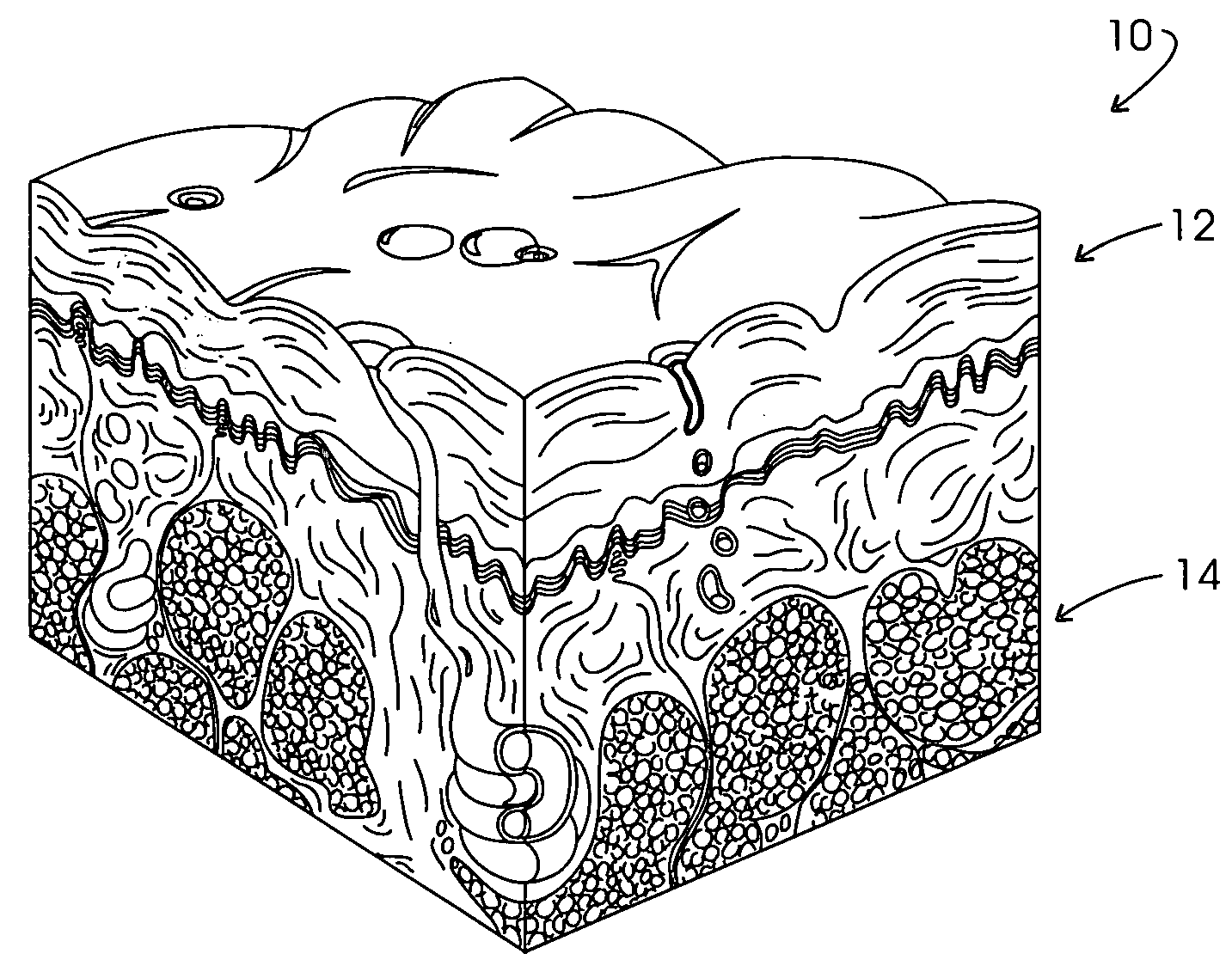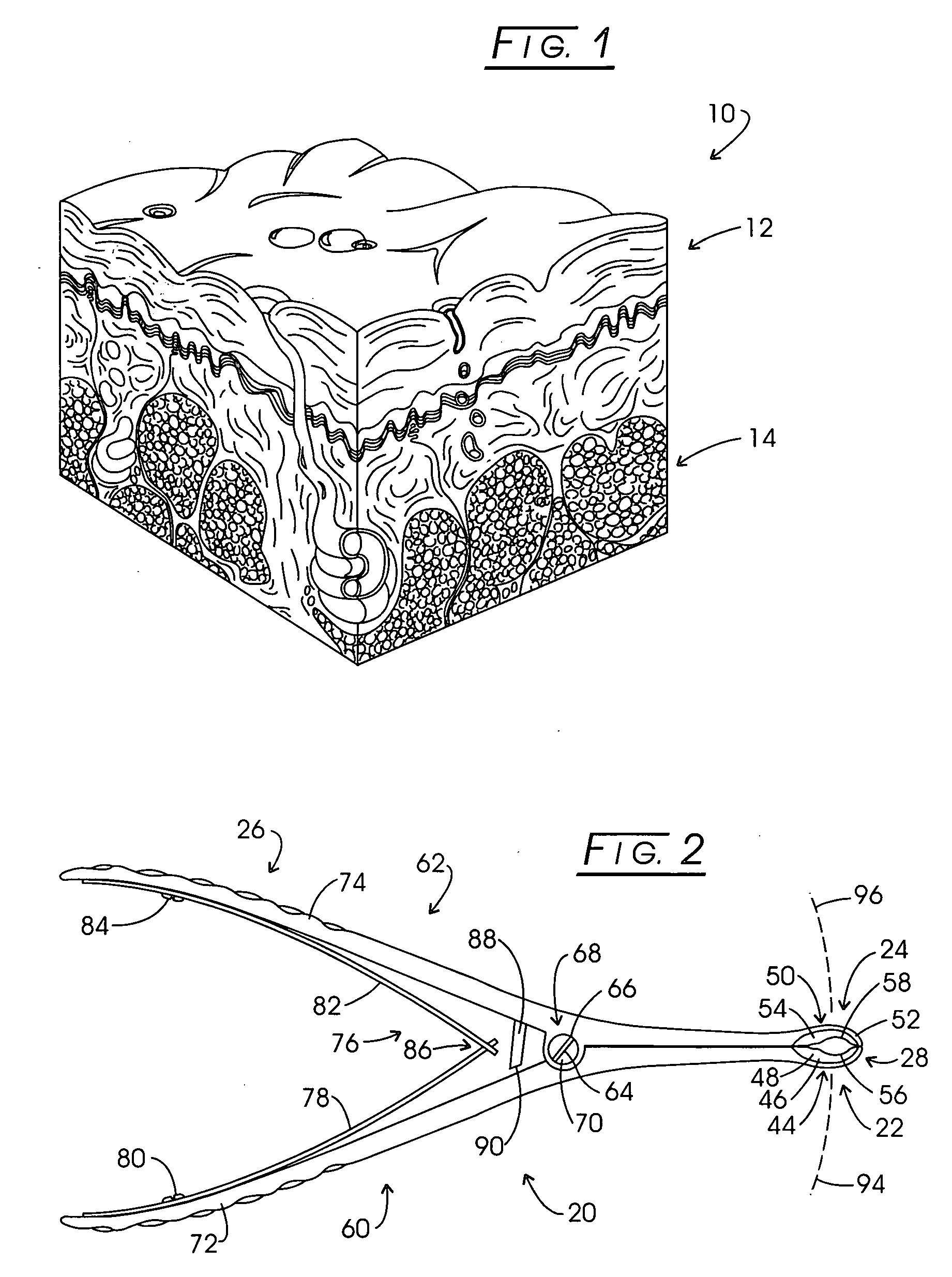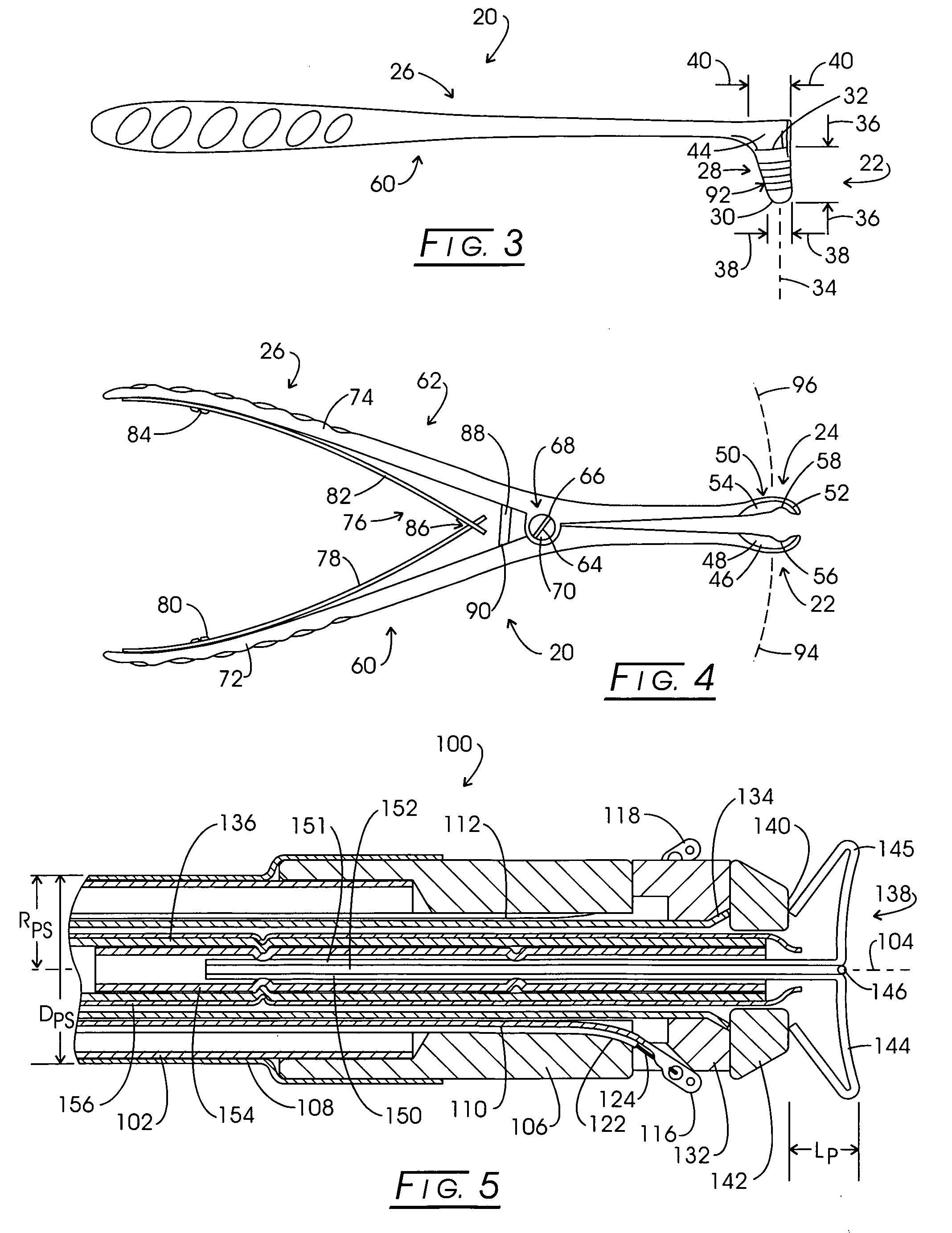Method and apparatus for positioning a tissue recovery instrument in confronting adjacency with a target tissue volume
a tissue recovery and target tissue technology, applied in medical science, surgery, vaccination/ovulation diagnostics, etc., can solve the problems of scarring at the location of the incision, high blood loss, and risk of false negative, so as to avoid thermal damage
- Summary
- Abstract
- Description
- Claims
- Application Information
AI Technical Summary
Benefits of technology
Problems solved by technology
Method used
Image
Examples
Embodiment Construction
[0067]As a prelude to considering the method and apparatus involved with the initial subcutaneous positioning of the then un-energized tip of the tissue capture instrument, some insight into the mechanical structure of tissue involvement may be beneficial. The initial tissue to be encountered in the procedure is the skin, which is an anatomically and physiologically specialized boundary lamina ranging from about 1.5 mm to 4.0 mm in total thickness. Structurally, skin is complex and highly specialized, being formed as an intimate association between two distinct tissues: keratinized stratified, squamous, epithelium, superficially, the epidermis, and a deeper layer of moderately dense connective tissue, the dermis. This combination results in an integument providing a most effective barrier against a variety of externally encountered phenomena including thermal and mechanical excursions.
[0068]Referring to FIG. 1, a schematic representation of the organization of the skin is represente...
PUM
 Login to View More
Login to View More Abstract
Description
Claims
Application Information
 Login to View More
Login to View More - R&D
- Intellectual Property
- Life Sciences
- Materials
- Tech Scout
- Unparalleled Data Quality
- Higher Quality Content
- 60% Fewer Hallucinations
Browse by: Latest US Patents, China's latest patents, Technical Efficacy Thesaurus, Application Domain, Technology Topic, Popular Technical Reports.
© 2025 PatSnap. All rights reserved.Legal|Privacy policy|Modern Slavery Act Transparency Statement|Sitemap|About US| Contact US: help@patsnap.com



